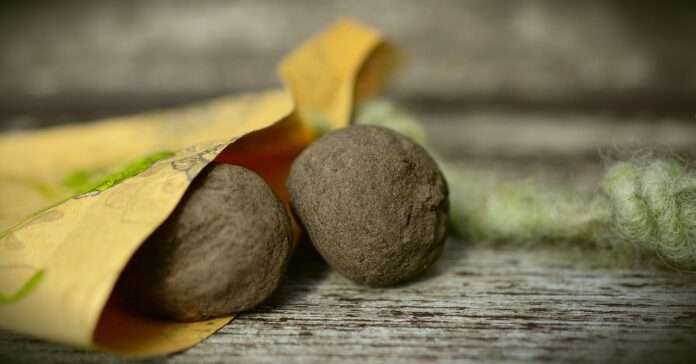In the face of escalating climate uncertainties and environmental degradation, the innovative approach of Seed Balls has emerged as a beacon of hope for restoring life to degraded lands and forests. This article delves into the transformative power of Seed Balls – a method that promises to ensure robust afforestation efforts and drive ecological revival.
Table of Contents
The Growing Urgency of Afforestation
Extreme weather events, from high-intensity rainfall to extended dry spells, have become alarmingly common in recent decades. These climatic anomalies, coupled with the rise in greenhouse gases like carbon dioxide, have created an urgent need for ecological restoration. Deforestation, identified as a major contributor to the oxygen-carbon dioxide imbalance, has led to a reduction of forest areas by 0.5% over the last 10 years, resulting in an 11% increase in atmospheric carbon dioxide levels according to FAOSTAT (2019).
Afforestation as the Solution
Afforestation emerges as a potent solution to combat the adverse impacts of deforestation. However, the high costs and challenges associated with handling tree saplings and providing initial care after planting have hindered the success of afforestation projects. Enter the revolutionary Seed Ball technique, an effective means of propagating plants from seeds. Seed balls offer protection to seeds from external stress and predation, overcoming one of the major hurdles faced in afforestation efforts.
The Power of Seed Balls
The significance of seed balls lies in their ability to rejuvenate destroyed regions. In the Amazon rainforests, low-cost direct sowing using seed balls has successfully regenerated areas that were once devoid of life. Unlike many regeneration techniques that prove to be cost-prohibitive, seed balls offer a cost-effective solution for revegetating vast expanses of arid terrain. This technique has garnered attention for its potential to make large-scale forest restoration feasible.
Unveiling the Seed Ball Technique
Seed balls offer a simple yet ingenious approach to reforestation. These small spheres are made by combining loamy soil, compost manure, water, and rice seeds. This unique mixture ensures better performance when dry-sown in semi-arid and arid regions. Seed balls provide a microsite shield against predation and adverse environmental conditions, fostering optimal conditions for seed germination. When rain finally arrives, these seed balls sprout, bringing life back to degraded lands.
Overcoming Afforestation Challenges
Afforestation endeavors often face numerous challenges, including seed predation, poor survival rates, and inadequate seedling establishment. Seed balls effectively address these issues by providing a protective shell that shields seeds from predators. Additionally, the organic content within the seed ball medium offers essential nutrients during germination. By leveraging these advantages, the Seed Ball initiative has gained traction, collaborating with forest departments and local indigenous communities to promote afforestation on degraded lands.
The Impact of Seed Balls
Seed balls, with their inherent advantages, have emerged as a pivotal strategy for increasing green cover, particularly in areas affected by cyclones or droughts. This unique approach involves creating golf ball-sized mixtures of soil, seeds, and compost, which are then scattered strategically to promote tree growth. Not only do seed balls offer a practical solution for afforestation, but they also empower local communities to participate actively in the restoration of their environments.
Why Choose Seed Balls?
Among the multitude of initiatives aimed at improving green cover, seed balls shine as a rapid and cost-effective method for reclaiming lost vegetation. Widely adopted for ecological restoration, seed balls provide a versatile approach that embraces a variety of seeds and plants. From vegetables like tomatoes, lettuces, and peas to trees such as neem, sandalwood, and bamboo, seed balls offer a holistic solution for diverse afforestation needs.
Crafting Seed Bombs: The Process Unveiled
The process of creating seed balls is surprisingly straightforward. With soil or compost, clay, and region-specific seeds, anyone can contribute to the cause of afforestation. By adding organic matter and compost to the soil, moisture retention, nutrient availability, and microbial activity are enhanced. Mixing this soil with seeds and dry clay forms the foundation of the seed ball, while gradual addition of water helps shape the mixture into a compact ball. The sun-drying process completes the creation of clay seed balls.
Varieties of Seed Balls
There are two main categories of seed balls: Vegetable Seed Balls and Tree Seed Balls. Vegetable Seed Balls encompass a range of options, including tomatoes, lettuces, beetroots, radishes, melons, squashes, pumpkins, beans, and peas. On the other hand, Tree Seed Balls provide a diverse array of tree seeds, such as neem, sandalwood, palm, bamboo, and more. These seed balls empower individuals, even children, to actively participate in afforestation by simply tossing the seed balls in nearby forests and wastelands.
The Seed Ball Advantage
The effectiveness of the seed ball technique is underscored by its ability to overcome both biotic and abiotic stresses that often hinder traditional seed germination and viability. Under non-irrigated conditions, seed balls demonstrate superior performance. The nutrients within the seed ball medium offer essential nourishment, promoting robust seedling establishment and survival rates, even in resource-limited environments.
A Greener Future Through Seed Balls
As global climate concerns intensify, the urgency of ecological restoration becomes ever more pronounced. Seed balls, as an innovative and pragmatic solution, offer hope for rejuvenating degraded lands and forests. With its cost-effectiveness, community engagement, and proven efficacy, the Seed Ball initiative is poised to drive a transformative shift in afforestation efforts worldwide.
Conclusion
The Seed Ball technique is not just a solution; it’s a beacon of hope for our planet’s ecological future. It addresses the dire need for afforestation in the face of climate change, deforestation, and extreme weather events. Through their cost-effectiveness, simplicity, and effectiveness, seed balls provide an avenue for individuals and communities to play an active role in the restoration of our environment. As we cast seed balls into the soil, we sow the seeds of a greener tomorrow.


